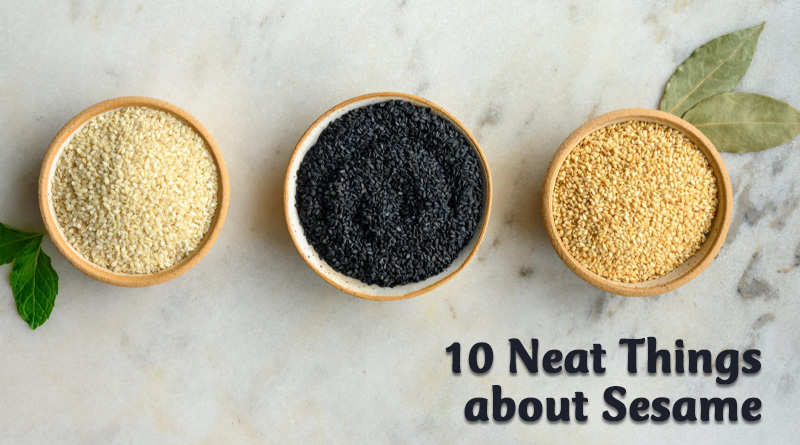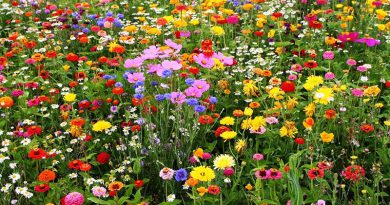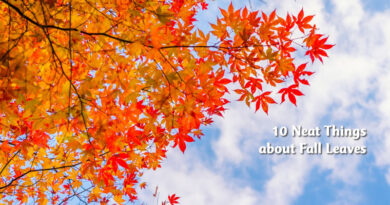About Sesame
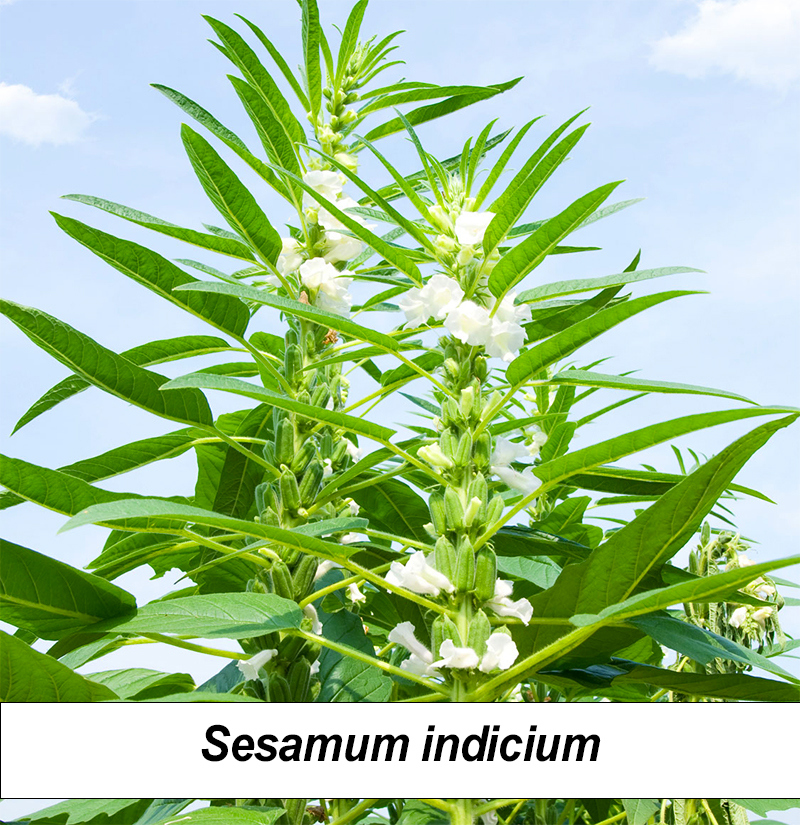
1. Open sesame.
Ali Baba overheard this magical phrase as he watched the 40 Thieves enter their cave of stolen goods; however, the pods of this amazing sesame plant, Sesamum indicum, need no instruction to open up and display their treasure trove of oil rich seeds. They will do so at the end of the season when the time is right and the fruit is ripe. Each pod, called a bun, contains 100 or more seeds.
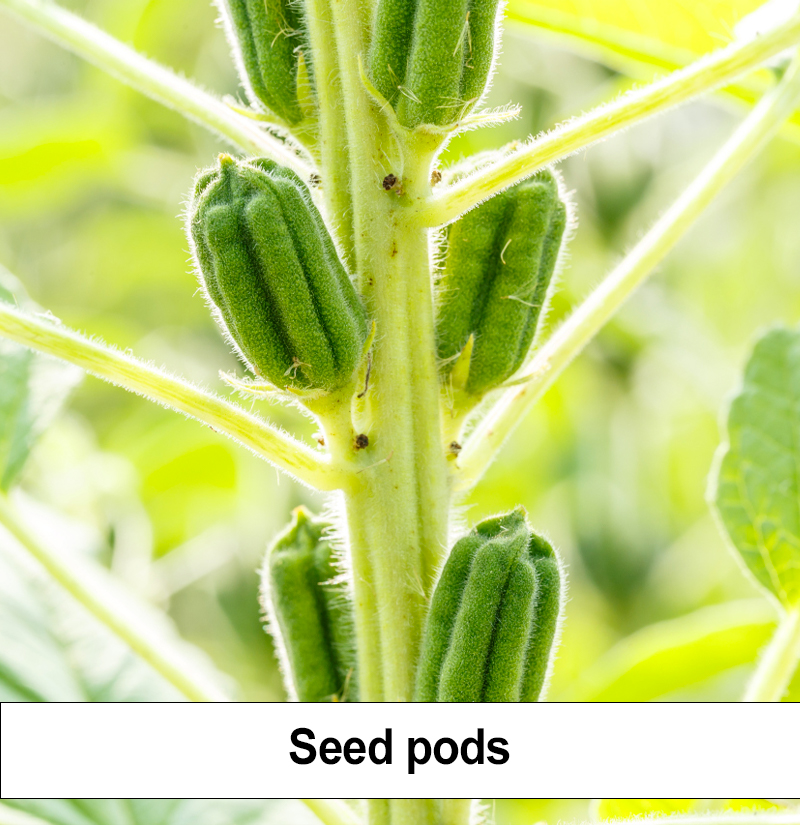
2. Ancient seed, African weed.
Sesame grows wild in both Africa and India. Sudan, Myanmar and India, in that order, are the largest producers and they grew about 2.5 million tonnes in 2018; the total world product was just over 6 million tonnes. The seeds have been in use for more than 4,000 years of recorded history and are the seeds highest in oil content; the seeds contain anywhere from 38 to 55 percent oil.
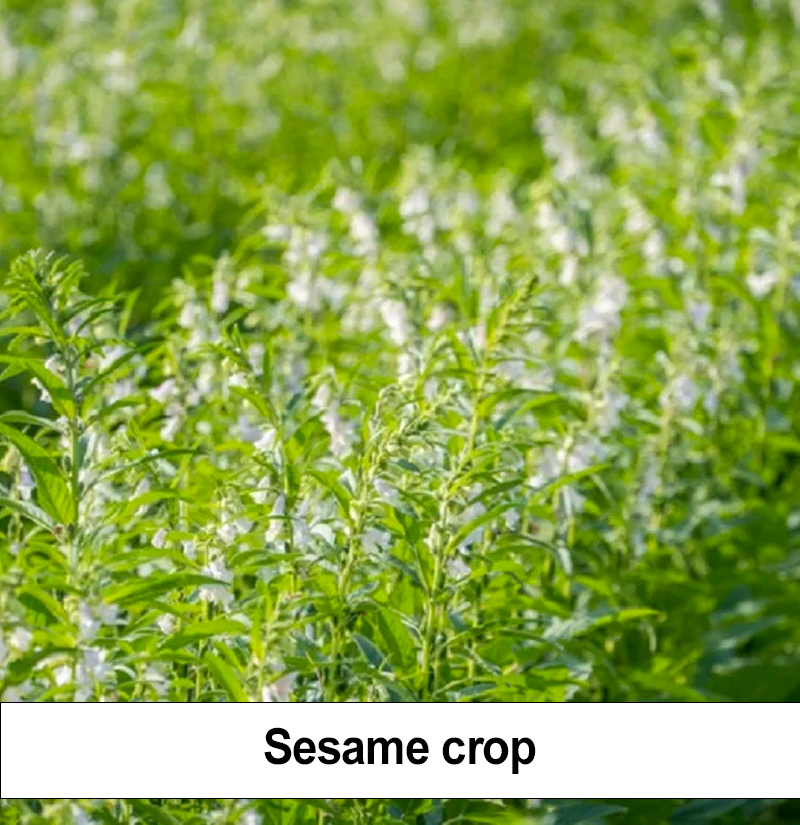
3. Survivor crop.
Sesame is a drought-tolerant crop due to its network of fibrous roots. It will often grow where other crops won’t. Known as simsim in Africa, it is now helping some farmers survive their frequent, devastating dry periods.
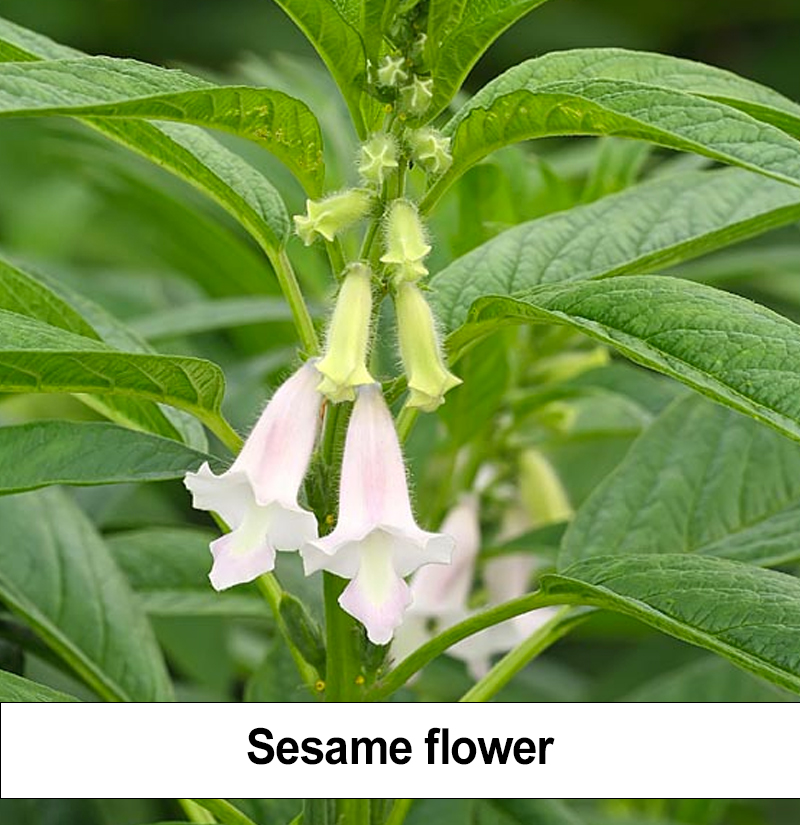
4. Pretty flowers.
While not an overly attractive plant (it could even be mistaken by some for marijuana), sesame does have lovely white or pink trumpet-shaped flowers resembling the blossoms of foxglove. These flowers grow in racemes close to the main stem, producing pods of seeds that ripen from the bottom of the plant upward.
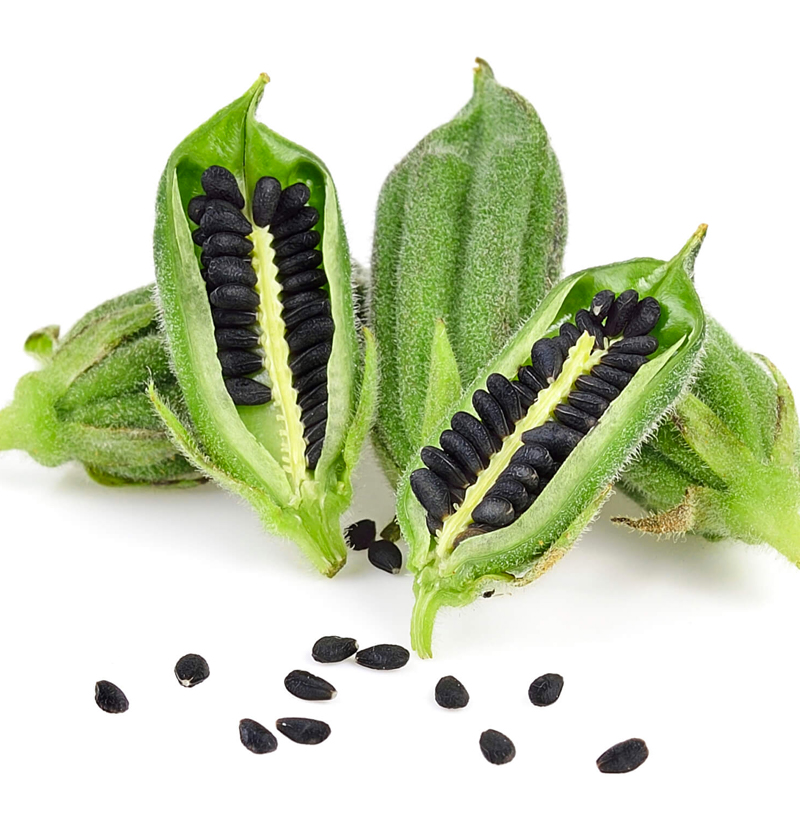
5. Year by year.
Sesame is an annual that takes 90 to 120 frost-free days from planting to maturity. Most of southern Canada has at least that many frost-free days per year, so you could try growing them. The problem is the heat required. Laying plastic mulch on the soil should help the plants be more productive. If you want to grow a pound of sesame seeds, you need a plot 10 feet long by 2.5 feet wide.
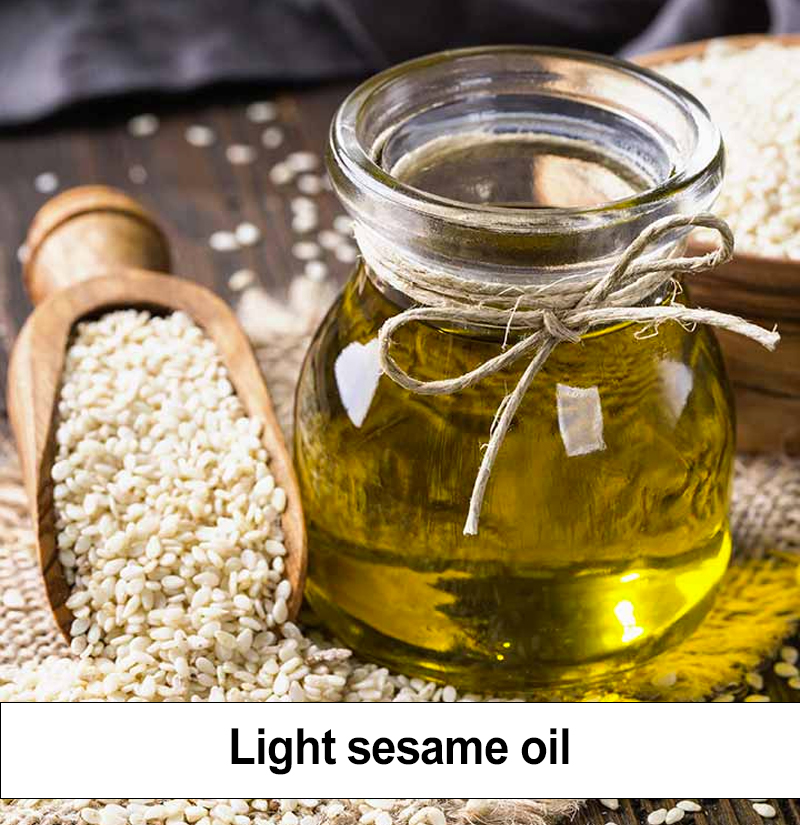
6. Sesame secret.
Sesame oil, often mixed with other oils for deep frying, was the traditional oil used for frying tempura battered food. Use only light sesame oil, which is cold pressed from raw seeds, for deep frying. Dark sesame oil has a slightly different taste and is suitable for stir frying and applications requiring intense flavour. It is made from roasted seeds.
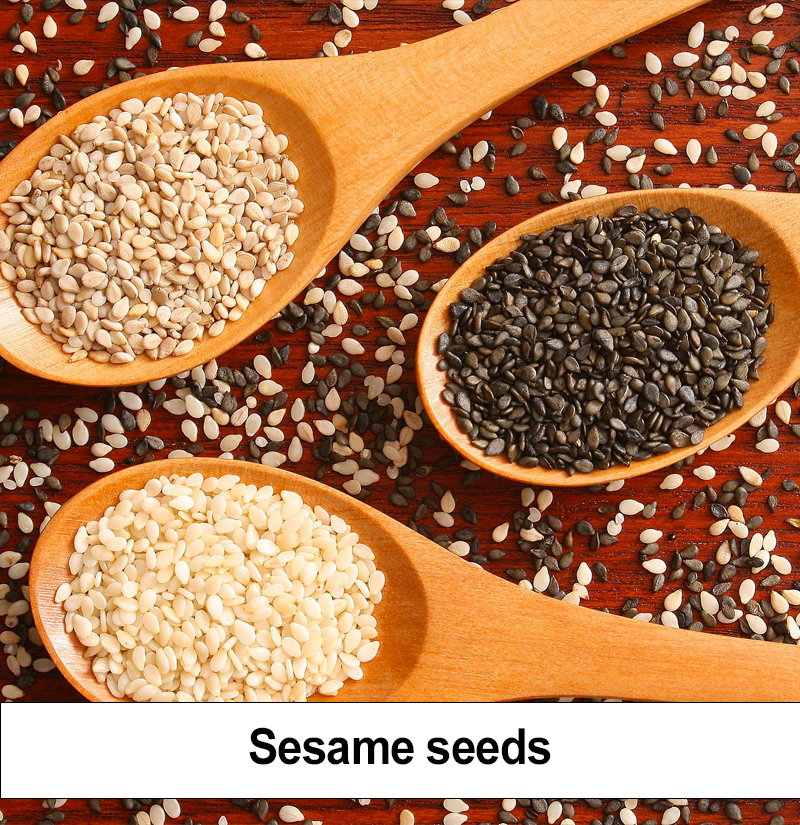
7. Black or white?
Sesame seeds come in many colours: black, buff, tan, gold, brown, reddish, grey and black. They all taste the same. Black sesame seeds are prized in Japan for aesthetic reasons, but they use white ones there as well.
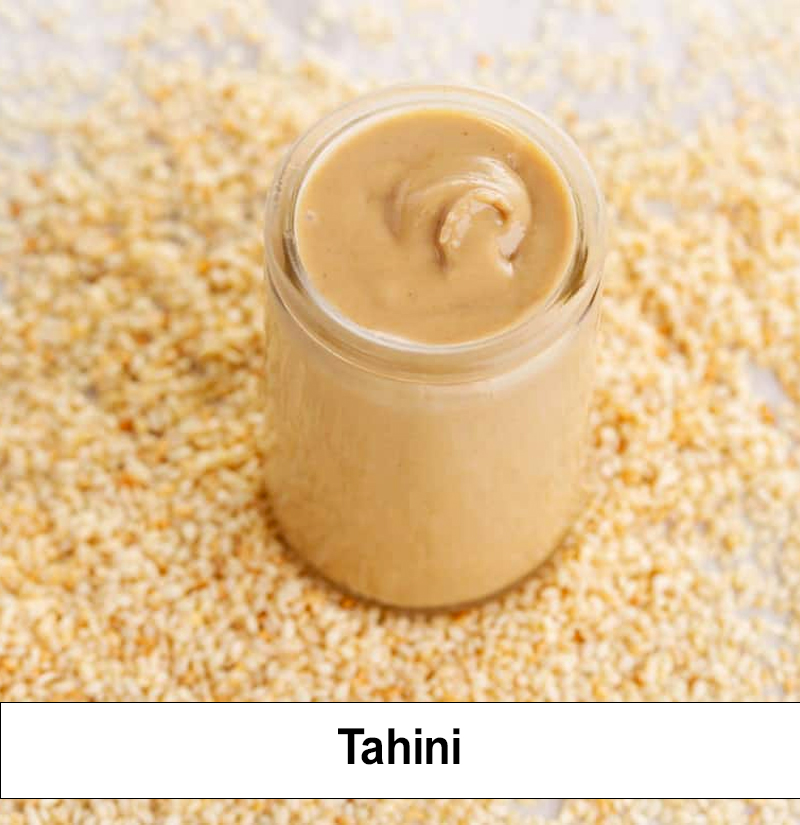
8. Tahini.
If you adore hummus, you know that sesame, lemon and garlic pulverized with chickpeas has a glorious flavour profile. The sesame flavour comes from tahini, which is hulled sesame ground into an oily paste.
9. Yum-yum-good for you.
Sesame seeds are calorie laden, and no wonder. A quarter cup, which is a generous portion, will give you 213 calories and 18 grams of fat but only 0.18 grams of sugar. There are also 6.3 grams of fibre in a quarter cup and 6.4 grams of protein.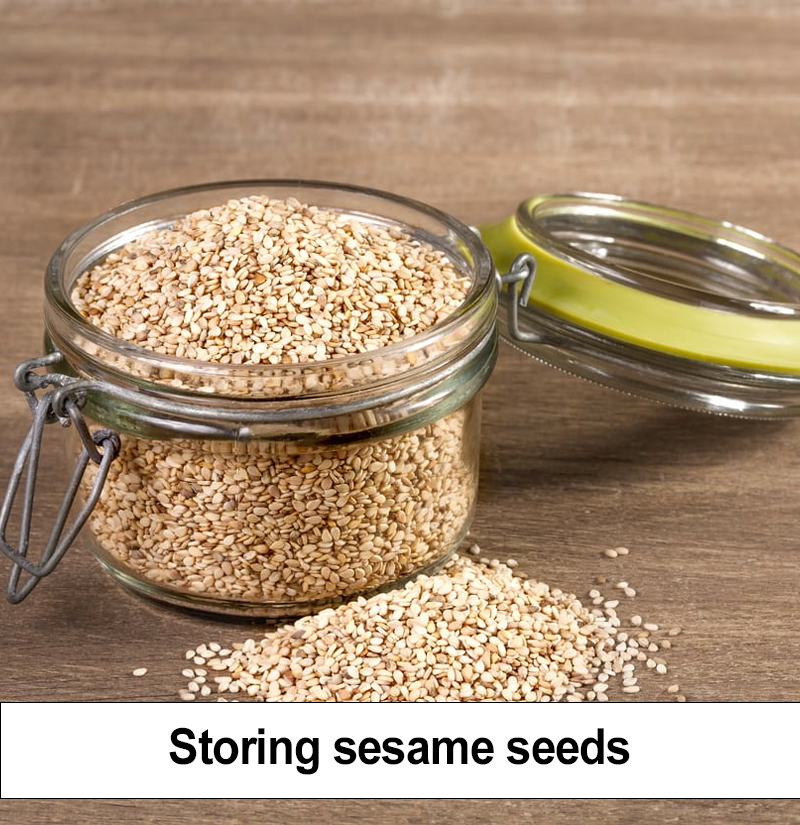
10. Keep it dry.
Store sesame seeds in a cool, dry place to prevent them from becoming rancid. A jar with a tight lid is a good choice.
Dorothy Dobbie Copyright©
Pegasus Publications Inc.

